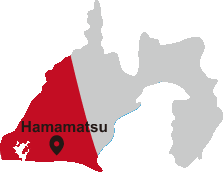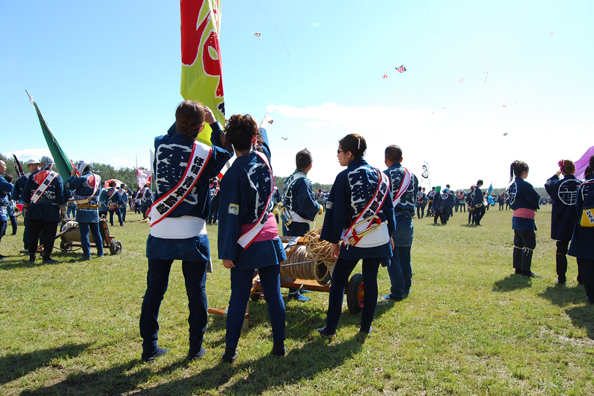
We will introduce the festival fashion seen at the Hamamatsu festival, held every year on May 3rd, 4th, and 5th. The attire that can be seen currently at the Hamamatsu festival are the working styles of craftsmen of the Edo Period. The happi-coat that everyone wears had the role of bringing together and heightening the fighting spirit of the residents in the region. In addition, because it was the formal attire of the people, it was worn during important events such as festivals.
People that are from outside the local area can participate in the Hamamatsu festival, however, they need a happi coat, lantern, and a patch given by the city they are participating in (images below).

Right Photo : Kamoeya
The basic fashion at the Hamamatsu festival
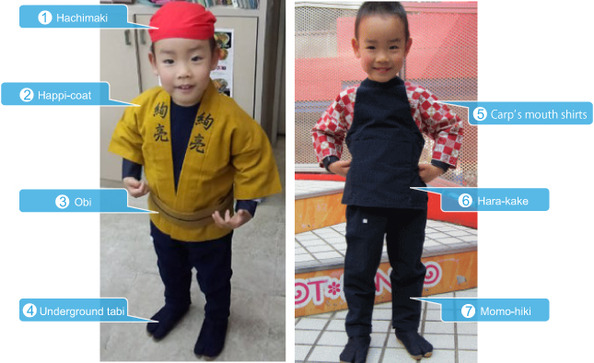
Photo : Kamoeya
①Hachimaki
Currently in Japan, "hachimaki" is a thin cloth that is used for mental concentration or to put in power. At the festival we mostly use Japanese face-cloths as hachimaki. There are different styles of tying.

Photo : Kamoeya
② Happi-coat
A traditional Japanese costume that warriors used to wear, and that eventually spread to the craftsmen and people of the town.
③ Obi
Used to tighten the happi-coat and the short coat. There is a sash and the maki obi (obi that you wrap around yourself) and recently the maki-obi is popular. The way people tie it shows their individuality.
④ Underground tabi
A tabi for wearing outside made for craftsmen who work outside. The soles are made out of rubber, and are separated into two in the area between the big toe and the second toe.
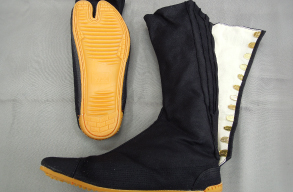
⑤ Carp's mouth shirts
A type of underwear that the craftsmen of the Edo period wore. A three-quarter sleeve shirt without a collar. The sleeves look like a carp's mouth, hence the name. The design used is the one that originally imitated tattoos.
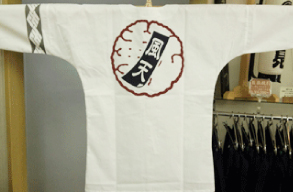
Photo : Kamoeya
⑥ Hara-kake
The craftsmen of the Edo period wore these during work, and it is made to hide the area from the chest to the stomach.
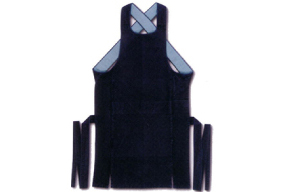
Photo : Kamoeya
⑦ Momo-hiki
Traditional Japanese bottoms. A pant-style attire that you wear by wrapping the strings attached to the hip area around your hips and tying it. This again, was a style of working wear of the craftsmen.
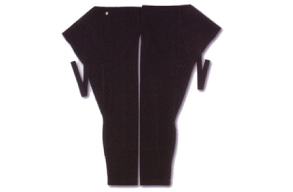
Photo : Kamoeya
Hairstyle
Many glamorous hairstyles unique to women can be seen. The hairstyles are of wide variety, from French twists to knit-ins, and fluffy curls to rough hairstyles. The beauty salons are filled from the morning, with ladies participating in the festival.
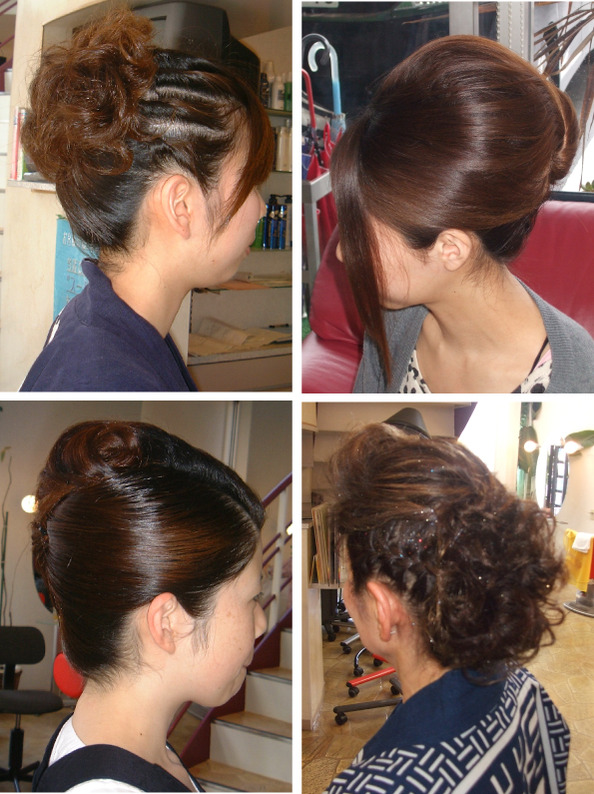
Photo : Hair Museum Kiichi
The recent trend
・From about 30 years ago, indigo-dyed costumes started to appear and they are still popular and are a main trend.
・Styles where people wear short coats inside of the happi-coat are popular and there are many people who make their own original short inner coat.

Photo : Kamoeya
2015.5.20 update
Content may be subject to change after publication. Please also note that we are not accountable for loses and damages that may occur as a result of said changes.
Content may be subject to change after publication. Please also note that we are not accountable for loses and damages that may occur as a result of said changes.

